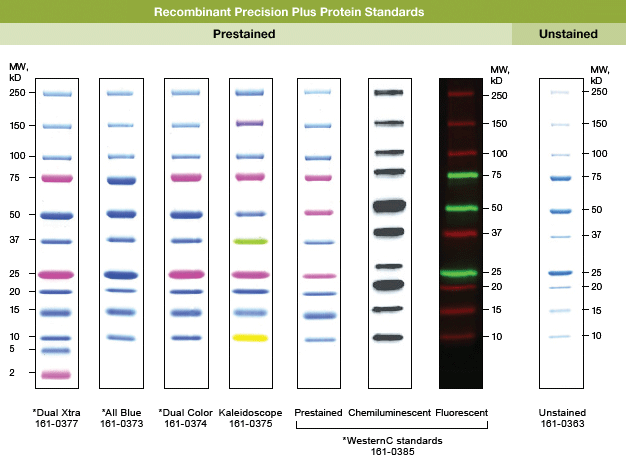

The nitrocellulose membrane only displays the protein Kaleidoscope Unknown protein #2 treated with Anti-Vimentin antibody produced in goat and a correlating Figure 4 consists of the results from one Western Blot, specifically displaying the Each membrane isĬoated with a different primary antibody and each primary antibody has a correlating secondaryĪntibody. Membrane that underwent horseradish peroxide (HRP) colorimetric detection. Figures 4, 5, and 6 display the three strips of nitrocellulose This ladder will be used to help identify the molecular weight of the The image shows a multitude of different colored bands associated with varying The unknown protein, as shown to be calculated in Table 2.įigure 3 displays the expected molecular weights from a Standard Protein Kaleidoscope Molecular weights according to each band migration distance and average molecular weight of The equation from the line of best fit was used to calculate the Proves there is a strong correlation between the extrapolated line of best fit the and data points The exponential equation generated from the line of best fit is y =Ĥ01.33e-0.077x and the correlating coefficient of determination is R² = 0.9948. Scale for the molecular weight and the x axis is scaled normally.

Kilo-Daltons and distance of migration in millimeters respectively. The band was visible between theĥ0-75 kDa Kaleidoscope protein ladder, we approximated the band length to be 65 kDa.įigure 2 displays a graph generated using the values from Table 1, of the band migrationĭistance for the Standard Protein Kaleidoscope Ladder. Used to identify the molecular weight of the unknown protein. The SDS-PAGE conducted in the previous week produced band migration lengths which can be The dataĮxtrapolated from this gel image was used to select three specific primary antibodies and twoĬorrelating secondary antibodies that would be used in the part 3 characterization experiment. Standard ProteinKaleidoscope Ladder Anti-Heat shock proteinproduced in mouseįigure 1 represents the gel prepared from the part 1 characterization experiment. The line of best fit equation gein kilo-Daltons nerated is yĤ01.33eassociated R² = 0.9948. Is extrapolated where y and x represent molecular weightand distance of migration in millimeters respectively. A standard curve is produced by plotting the molecular weightĪgainst the distance of migration of the standard.
#KALEIDOSCOPE PROTEIN LADDER PLUS#
Plus Kaleidoscope Standard Protein Ladderįigure 2. Molecular Weight (kDa) as a Function of Band Migration Distance (mm) for Precision Sodium dodecyl sulfate polyacrylamide gel electrophoresis of Unknown Protein #įigure 2. SDS-PAGE Molecular Weight of Unknown Protein #2 Distance Molecular Weight (kDa) Distance migrated (mm) SDS-PAGE Molecular Weight Protein Standard Distances
#KALEIDOSCOPE PROTEIN LADDER SERIES#
Written in the highly successful Methods in Molecular Biology™ series format, chapters contain introductions to their respective topics, lists of the necessary materials and reagents, step-by-step, readily reproducible laboratory protocols, and notes on troubleshooting and avoiding known pitfalls.Īuthoritative and accessible, Poly(ADP-Ribose) Polymerase: Methods and Protocols serves as an ideal guide to scientists who wish to continue exploring this exciting and progressive research field.Presentation: Protein Characterization Data Analysis

Divided into three convenient sections, Poly(ADP-Ribose) Polymerase: Methods and Protocols aims to explain how PARP proteins act within the normal development of an organism as well as in pathogenic conditions, seeks to advance the knowledge of developmental pathways regulation, and endeavors to facilitate the development of new therapeutic drugs and methods to target PARP-dependent processes. Whereas PARP inhibitors can suppress tumor growth and proliferation in certain breast, ovarian, and prostate cancers, understanding how PARP controls cellular functions is essential for the development of novel cancer treatments strategies. Being involved in basic cell functions, PARPs mediate rapid responses to such environmental factors as stress, infection, nutrition and hormonal signals. Poly (ADP-ribose) Polymerases (PARPs) are abundant and ubiquitous proteins that regulate crucial processes of the cell cycle, DNA repair, genomic stability, and transcriptional regulation.


 0 kommentar(er)
0 kommentar(er)
